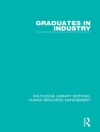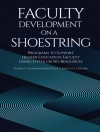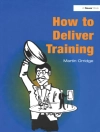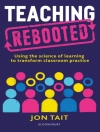The belief that rainmakers bring rain is a superstition, but they are able to create cohesion among the people who believe in their powers. Stefan Kühl describes how the rainmaker effect works in the model of the learning organization. Many of the modern management principles that are billed as formulas for success – e.g., clear objectives, employee identification, participation, and continuous learning – fail to deliver on their promises. However, they do have other beneficial effects. They ensure that organizations keep evolving.
Зміст
Preface: On Rainmakers, Change Projects, and Management Concepts
1. Introduction: The Limits of the Learning Organization
2. The End of the Dream of the Optimal Organizational Structure
2.1. An Initial Approach to Solving the Dilemma of Stability and Change: Stable Organizational Structures with Change-Oriented Units
2.2. The Problem with the Optimal Organizational Structure—Sealed-Off Cores
2.3. The End of the Hope for an Optimal Organizational Structure—Confronting a Turbulent Environment
3. The Learning Organization and the Hope For “Good” Rules of Change
3.1. The Learning Organization—New Methods for Resolving the Dilemma of Stability and Change
3.2. Signs of the Rationality of Change
3.3. From Rational Organizational Architectures to the Principles of Rational Change
4. The Blind Spots of the Learning Organization—Seven Contradictions in the Rules of Good Organizational Change
4.1. The Dilemma of Objectives—Precisely Defined Goals Provide Guidance, but Reduce Adaptability
4.2. The Identification Dilemma—Identifying with Change Processes Reduces Organizational Elasticity
4.3. The Employee Dilemma—When the Focus Is on People
4.4. The Dilemma of Communication—the Strengths and Weaknesses of Discussion
4.5. The Dilemma of Self-Organization—When Self-Organization Is Determined by Organization by Others
4.6. The Dilemma of Reserves—the Demand for Self-Obstruction
4.7. The Learning Dilemma—When Organizations Fall Victim to Successful Learning
4.8 The Limitations of Planned Organizational Change
5. On the Benefits and Dangers of the Irrationality, Ignorance, and Forgetfulness of the Learning Organization
5.1. The Art of Treating Uncertain Knowledge as Certain
5.2. The Learning Organization Concept—Organized Self-Pacification
5.3. The Learning Trap—the Learning Organization and Crises
6. Beyond the Learning Organization—Managing the Dilemma of Organizational Change
6.1. The Argument for an Overarching Perspective—Managing Contradictions
6.2. Beyond the Dream of a Change Process That Can Be Planned
An Afterword on Methodology
Bibliography












